The following article is from Cosmic Pursuits
COPYRIGHT © 2018 MINTAKA PUBLISHING INC.
The Night Sky This Month – July 2018
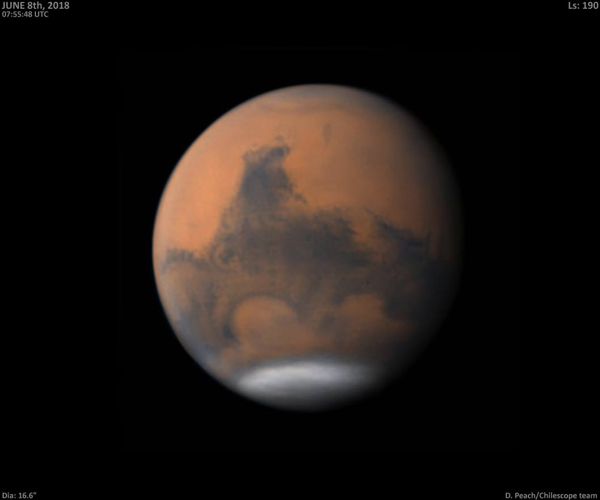
It’s another excellent month to feast your eyes on planets. Mercury, Venus, Mars, Jupiter, and Saturn are all easily visible in the night sky with the unaided eye. And while Jupiter and Saturn remain large and bright and beautiful in a telescope, Mars is the main event this month as the planet makes its closest approach to Earth in 15 years. The planet will be a sight to behold without optics as it hovers fat and bright in the southeastern sky an hour or two after sunset. When the atmosphere is steady, observers with a telescope will see plenty of surface features including the southern polar cap, red-orange plains, and darker expanses of exposed rock and crater fields. The planet will remain well positioned to observe for all of July and well into August and September. There’s also a fine lunar eclipse for observers in Europe, Africa, Australia, and New Zealand later in July, and there’s a respectable meteor shower at month’s end for southern stargazers. Here’s what to see in the night sky this month
1 July 2018. Mars and the waning gibbous Moon lie just 6º apart for most of the night. Mars will brighten rapidly and grow in apparent size this month on its way to opposition on July 27.
4 July. Mercury lies less than a degree from the Beehive star cluster (M44) in the western sky after sunset. Use binoculars to see the pair. Mercury will continue to get a little higher above the horizon each day until July 12 and will remain visible until the 17th or 18th.
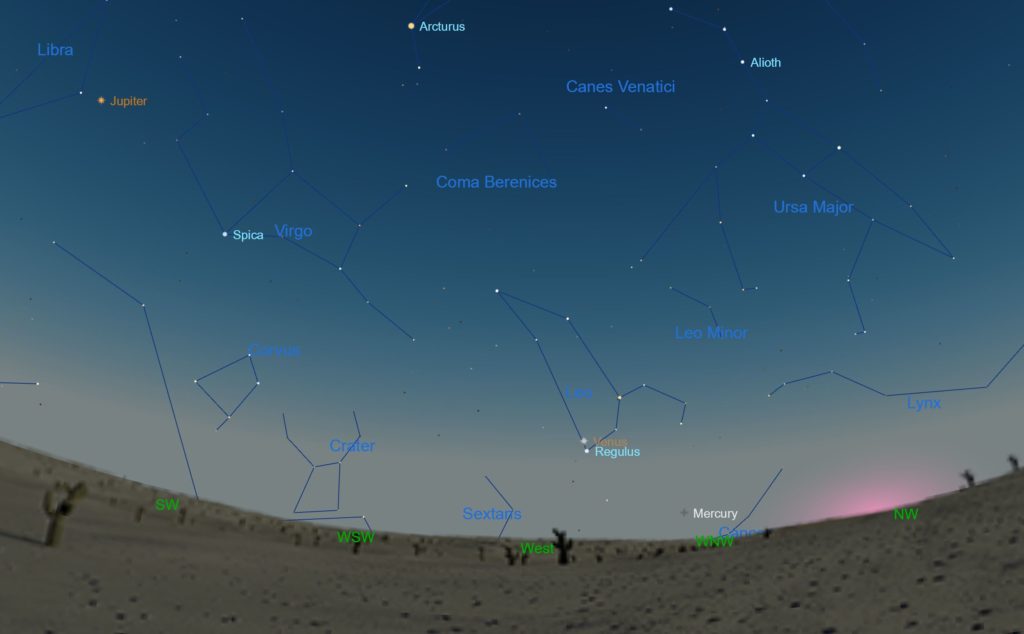
6 July. Earth reaches aphelion, its furthest distance from the Sun during its annual orbit. Today, we are 152,095,566 km from our home star. Or to be more precise, the center of the Earth is that distance from the center of the Sun.
6 July. Last Quarter Moon, 07:51 UT.
9 July. Look to the west after sunset to see bright Venus just 1º from the 1st magnitude star Regulus. Venus presents a gibbous disk this month as it sinks each night into the western horizon. The planet shines at a very bright magnitude -4.2, brighter than anything in the sky except for the Sun and Moon.
10 July. I know it’s hard to believe, but the stars of northern winter (and southern summer) are starting to make an appearance in the eastern sky before sunrise. Today, a thin crescent Moon lies near the stars of the Hyades star cluster and the bright star Aldebaran just over the eastern horizon. Binoculars will give you a lovely view.
10-11 July. Jupiter ceases its retrograde motion today and now begins moving eastward against the background stars each night. The planet is a couple of months past opposition, but it’s still a splendid sight in the evening sky.
12 July. Mercury reaches greatest eastern elongation, its largest angular distance from the Sun. The planet will now begin to move quickly each day back toward the western horizon. It will reappear in the morning sky later in August.
13 July. New Moon, 02:48 UT
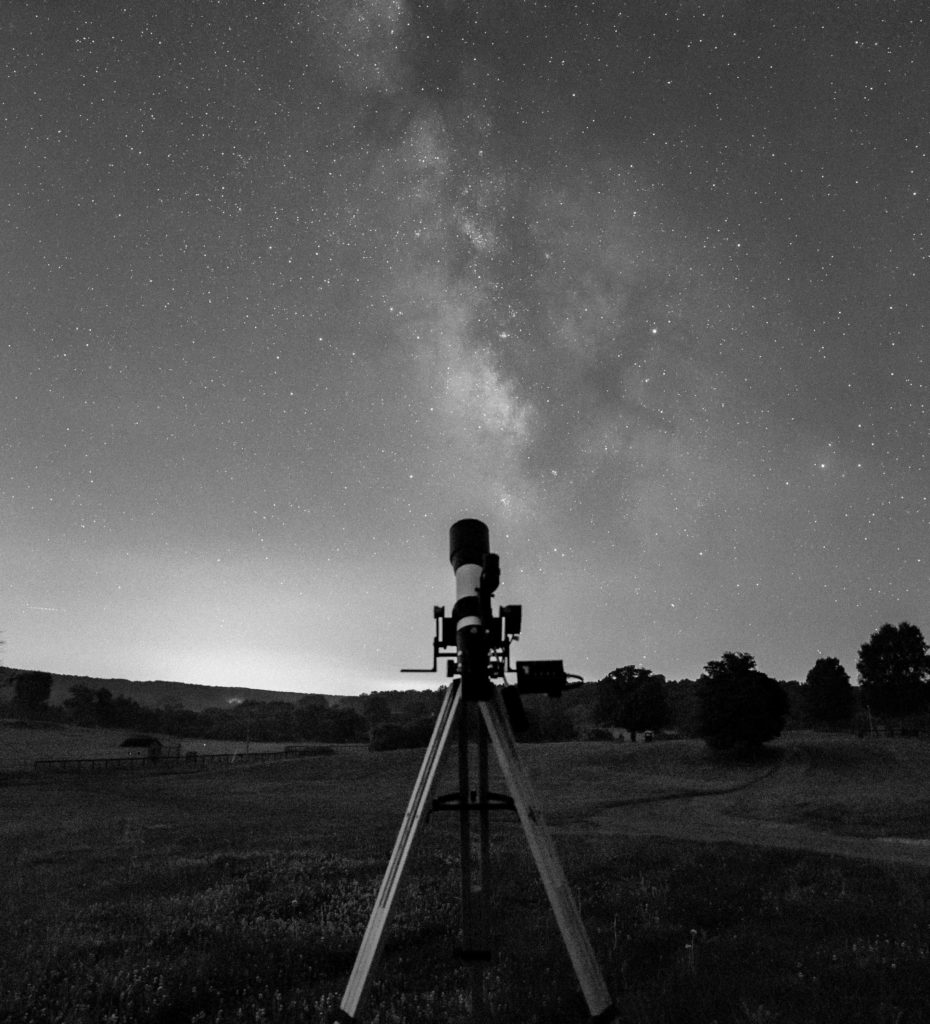
13 July. A partial solar eclipse is visible over Antarctica and the extreme southern reaches of Australia.
15 July. Another lovely view: look for Venus, a waxing crescent Moon, and the star Regulus in the western sky after sunset. All lie within about 5º of each other.
19 July. First Quarter Moon, 19:52 UT.
20 July. The gibbous Moon forms a triangle with brilliant Jupiter and the 2nd magnitude star Alpha Librae (also called Zubenelgenubi).
24 July. The Moon makes its way along the ecliptic and checks in with the planet Saturn in the constellation Sagittarius. Saturn reached opposition in late June and continues to put on its best show of the year. The planet is located above the Teapot of Sagittarius in the southeastern sky after sunset and remains visible all night long.
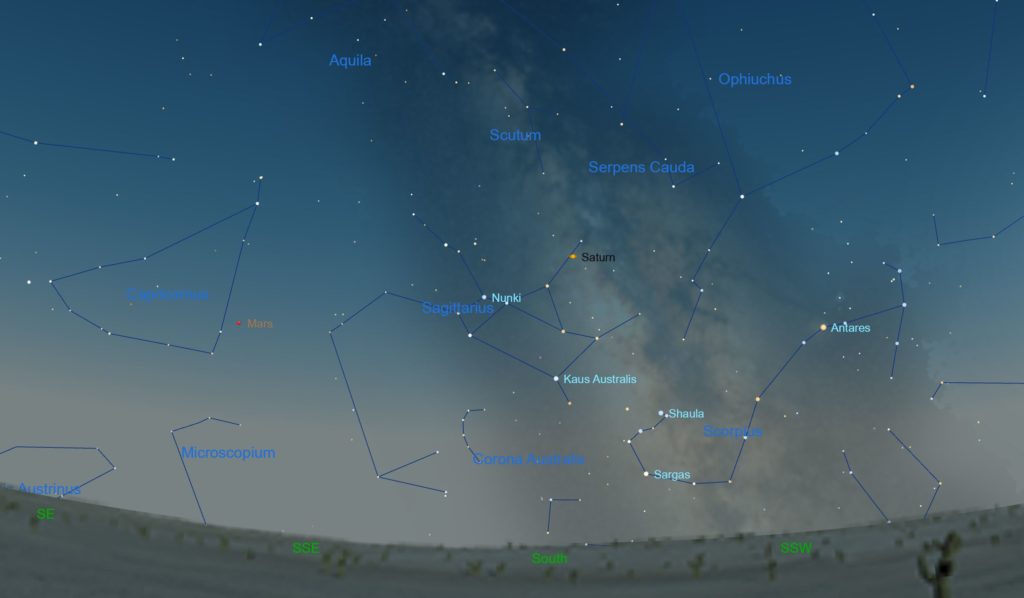
27 July. Mars reaches opposition, rising in the east as the Sun sets in the west. Oppositions of Mars only happen every two years and two months, and this apparition is the best since 2003. Mars makes its closest approach to Earth on July 30-31. You can’t miss it. Look to the constellation Capricorn in the southeast (or east in the southern hemisphere), just east of Sagittarius after sunset. You will see a blazing bright planet shining with a steady ochre glow. If you have a telescope, make the effort to observe Mars. You’ll get the best view when the planet is furthest above the horizon a couple of hours after midnight this month. It rises a little earlier each night. Go have a look. Mars won’t be this close again until 2050.
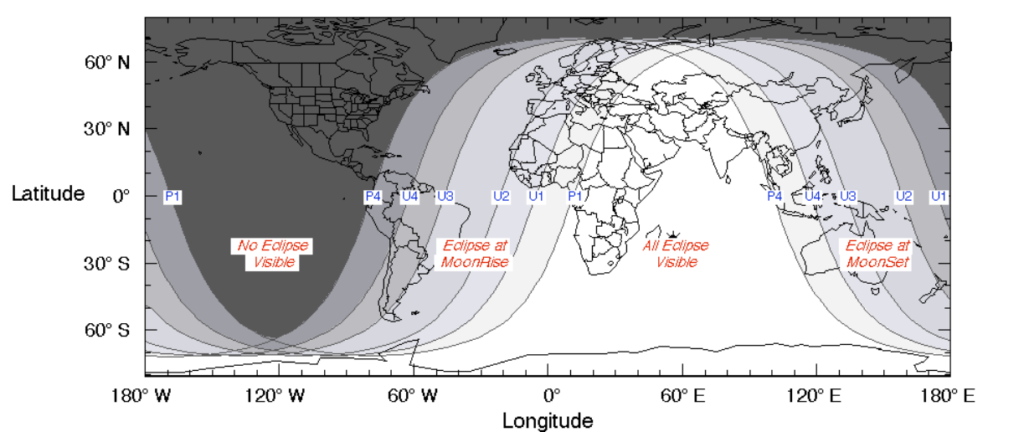
27 July. Full Moon, 20:20 UT
27-28 July. Observers in Europe, Africa, Asia, and Australia will enjoy a total lunar eclipse. In Europe, the partial phase of the eclipse gets underway as the Moon rises on the night of the 27th. In Australia, the Moon sets on the morning of the 28th as the eclipse is in progress. This will be a long eclipse with a total of 1 hour and 43 minutes of totality. Mars, which reaches opposition tonight and shines at a brilliant magnitude -2.8, lies just 5-6º away from the Moon during the eclipse. Alas, observers in North America will miss this event. But we still have Mars!
28 July. The Southern Delta Aquarid meteor shower peaks. Look for 15-20 meteors per hour, with a path that traces back to the radiant in the constellation Aquarius. This somewhat weak shower favors southern-hemisphere observers. The best view is after midnight, and you can see these meteors anywhere in the sky.
